May 14, 2025 | 15:18 GMT +7
May 14, 2025 | 15:18 GMT +7
Hotline: 0913.378.918
May 14, 2025 | 15:18 GMT +7
Hotline: 0913.378.918
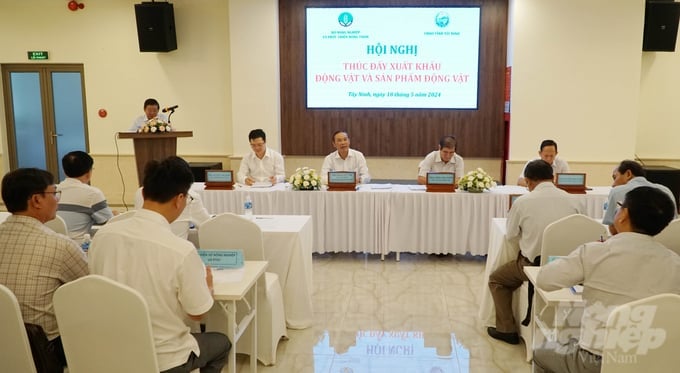
Deputy Minister Phung Duc Tien and Mr. Tran Van Chien, Vice Chairman of the Tay Ninh Provincial People's Committee, jointly chaired the conference on May 18. Photo: Le Binh.
According to the Department of Animal Health, the Ministry of Agriculture and Rural Development, in coordination with local governents, has implemented comprehensive measures to prevent and control livestock and poultry diseases within the last few years.
As a result, multiple dangerous diseases, such as avian influenza, Newcastle disease, Porcine reproductive and respiratory syndrome (PRRS), classical swine fever, foot-and-mouth disease, and African swine fever, have been effectively controlled.
Additionally, 3,940 disease-free establishments and zones have been certified across 57 provinces and cities.
However, compliance with international disease safety regulations is essential to the promote the export of animal products. According to regulations set by WOAH/OIE and importing countries, exported animal products must originate from disease-free establishments and zones.
Consequently, the Department of Animal Health is currently developing disease-free livestock and poultry establishments and zones in compliance with WOAH/OIE regulations.
According to Mr. Nguyen Van Long, General Director of the Department of Animal Health, vaccinating livestock and poultry against disease is an approach to achieving disease safety. However, several importing countries prohibit the use of preventive vaccines.
"For example, the European market prohibits the use of foot-and-mouth disease vaccines, whereas Japan only permits the use of avian influenza and Newcastle vaccines on breeding poultry, not on meat poultry. Consequently, meeting these vaccination requirements may affect Vietnam's progress and achievements in developing disease-free zones and establishments," Mr. Long added.
Despite strict disease control measures implemented by local veterinary forces, several dangerous diseases continue to sporadically affect livestock and poultry, with the most prominent being foot-and-mouth disease and avian influenza. On the other hand, small-scale livestock farming is relatively prevalent in the majority of Vietnamese regions. Notably, these small-scale models feature a high farming density, resulting in an increased risk of disease outbreak.
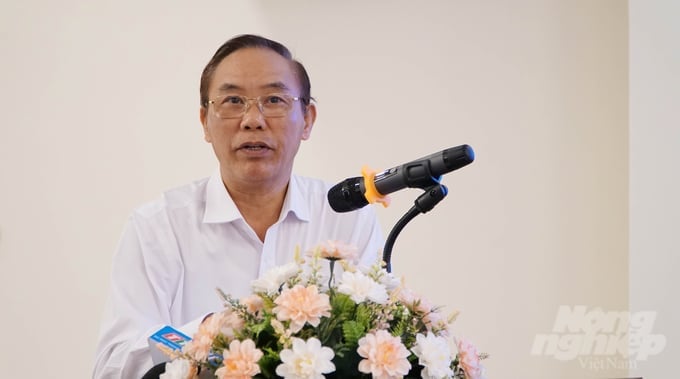
Mr. Phung Duc Tien, Deputy Minister of Agriculture and Rural Development. Photo: Tran Trung.
The Prime Minister recently approved the "National Plan for Implementing Key Tasks to Enhance Animal Disease Management, Control, and Ensure Food Safety for Products of Animal Origin from 2023 to 2030."
The Southeast region is commonly referred to as the "livestock capital" of the country. Accordingly, Vietnam aims to establish 11 disease-free zones in this region by 2025 and 19 zones by 2030, with a focus on safety from avian influenza and Newcastle disease at the district level in compliance with OIE/WOAH regulations.
By 2025, successful establishment of foot-and-mouth disease and African swine fever disease-free zones is targeted in four districts: Chon Thanh in Binh Phuoc province, and Phu Giao, Bau Bang, Dau Tieng, Bac Tan Uyen in Binh Duong province. An additional five districts are planned for 2030, including Dong Phu, Dong Xoai, Bu Dang, and Hon Quan in Binh Phuoc province, and Vinh Cuu in Dong Nai province.
Binh Duong and Binh Phuoc provinces aim to complete the establishment of African swine fever and PRRS disease-free zones by 2030.
From 2030 onwards, there will be a detailed plan and roadmap to implement disease-free livestock farming zones without vaccination against aforementioned diseases.
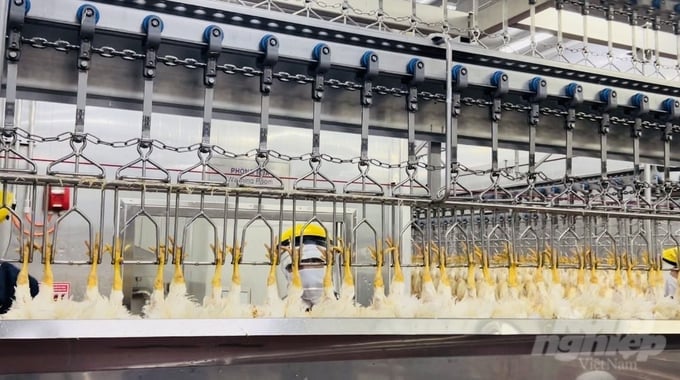
Various Vietnamese businesses are promoting investment in modern technologies in livestock farming, slaughtering, and processing to meet the strict requirements of the export market. Photo: Tran Trung.
Successful implementation of the "National Plan for Implementing Key Tasks to Enhance Animal Disease Management, Control, and Ensure Food Safety for Products of Animal Origin from 2023 to 2030" will require local governments to identify disease-free livestock farming zones, and integrate them into provincial planning in compliance with the Law on Veterinary Medicine, Law on Planning, and WOAH regulations.
Accordingly, stakeholders must organize information dissemination and training programs to improve professional skills and expertise in disease prevention and control, and the establishment of disease-free zones and facilities in compliance with WOAH regulations.
Other key activities under the National Plan include: managing disease-free livestock farming; maintaining control over the transportation of animals and animal products, and the slaughtering of animals; organizing veterinary hygiene inspections.
According to Phan Quang Minh, Deputy Director of the Department of Animal Health, livestock and poultry farming following a value chain model with a focus on biosecurity and disease safety has yielded remarkable initial economic benefits. Consequently, the model is gradually gaining popularity and expansion.
Vietnam's livestock sector has experienced significant development over the years due to the implementation of effective disease control.
“Various livestock farming regions have undergone structural transformations, shifting from small-scale, dispersed farming to large-scale farming operations and industrial farms, with a focus on high-tech slaughtering and processing to enhance food safety standards,” Mr. Minh reported.
Within the last few years, several major companies including C.P. Vietnam, Japfa Comfeed, Dabaco, and GreenFeed, have chosen Vietnam as their investment destination.
Subsequently, investment from these businesses have contributed to creating a sustainable development foundation for Vietnam's livestock sector.
Furthermore, this assistance has facilitated strong development in livestock and poultry farming in recent years. Consequently, the export of agricultural, forestry, and fishery products has seen significant growth year over year.

Mr. Nguyen Van Long, General Director of the Department of Animal Health. Photo: Le Binh.
Namely, the value of Vietnamese agricultural exports increased from 48.70 billion USD in 2021 to a peak of 53.22 billion USD in 2022. Subsequently, the total export turnover for the agricultural sector reached 53.01 billion USD in 2023.
The total volume of exported animal products increased by 1.7% compared to 2022, with notable growth rates observed in dairy and dairy products, processed chicken meat, and frozen pork.
Despite a slight decline, honey remained as the product with the highest export share.
In 2023, the total output volume of live meat reached 7.79 million tons, including 4.87 million tons of live pork and 2.31 million tons of live poultry meat. Additionally, fresh milk production reached 1.17 million tons, and poultry egg production reached 19.2 billion eggs.
Following years of restructuring, Vietnam's livestock sector is currently receiving commendable evaluations. Across various regions, the collaboration between major businesses, cooperatives, and local farmers has led to the establishment of closed production chains, thereby fostering a sustainable ecosystem for livestock development.
Vietnam also exports poultry to Japan, Hong Kong, and eggs and meat to Asian and European countries. Other Vietnamese exports include a wide range of bird's nest products, primarily produced in the Southeast region.
“However, there are several challenges and difficulties to be addressed, such as the limited export volume. To capitalize on the significant potential and advantages of our livestock sector, we must focus on exports. The Prime Minister has approved the National Plan, and our current task involves organizing its implementation, and establishing disease-free zones,” emphasized Deputy Minister Phung Duc Tien.
Nevertheless, achieving a stable export of livestock products to foreign markets remains a challenging task for the livestock sector. Namely, the import requirements, food safety standards and monitoring criteria enforced by importing countries are typically stricter than those of Vietnam's regulations.
Furthermore, these countries require Vietnam to implement a national food safety monitoring program for proposed export products.
Representatives from De Heus and CVP Food Binh Phuoc have proposed several solutions to overcome the difficulties and trade barriers imposed by other countries.
These solutions aim to facilitate the sustainable export of Vietnam's potential animal products to international markets, with a focus on Muslim-majority countries.
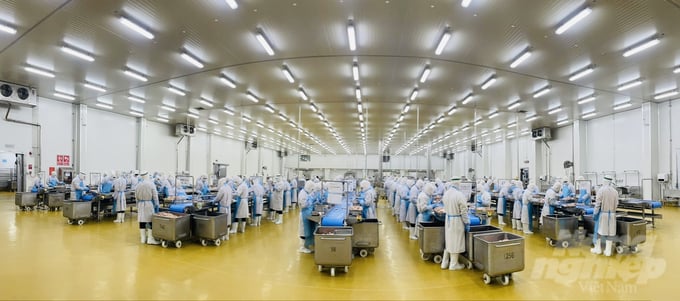
Vietnam's livestock sector is focusing on meeting export requirements for the highly potential Halal market. Photo: LB.
According to Mr. Nguyen Van Long, due to Vietnam's current status as a non-disease-free country, the establishment of disease-free zones in compliance with OIE/WOAH regulations is crucial to the promotion of animal and animal product exports.
"Furthermore, after disease-free zones are established, it is essential to build a supply chain that maintains compliance with disease safety and food hygiene requirements for breeding, feed production, slaughtering, and processing," Mr. Nguyen Van Long emphasized.
Translated by Nguyen Hai Long

(VAN) Data from 10,000 farming households will help professionalize production organization and support the implementation of the One Million Hectares Program for High-Quality, Low-Emission Rice Cultivation.

(VAN) FAO Director-General QU Dongyu marks International Day of Plant Health at NENA conference.

(VAN) Deputy Minister of Agriculture and Environment Hoang Trung affirmed that floriculture and ornamental plants are a growing industry that receives significant global attention.

(VAN) The three staple crops dominating modern diets – corn, rice and wheat – are familiar to Americans. However, fourth place is held by a dark horse: cassava.
/2025/05/10/4037-3-223011_495.jpg)
(VAN) Remote sensing technology is becoming an indispensable tool in monitoring resources, developing modern agriculture, and protecting the environment in Vietnam.

(VAN) The trash bag used on fishing vessels can withstand rough sea conditions, including level 8 to level 10 winds and waves. Notably, it can be hung anywhere on the boat.
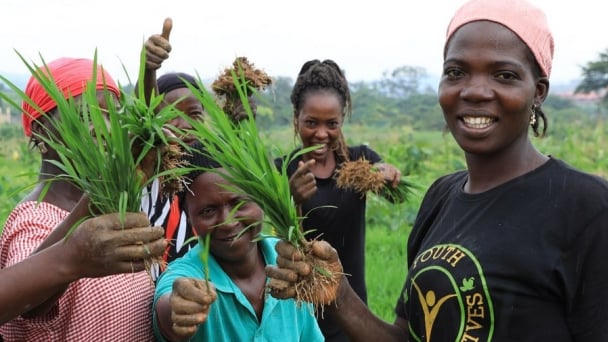
(VAN) African leaders launched the Kampala Declaration on Building Resilient and Sustainable Agrifood Systems in Africa, marking a bold step toward transforming the continent's agriculture.